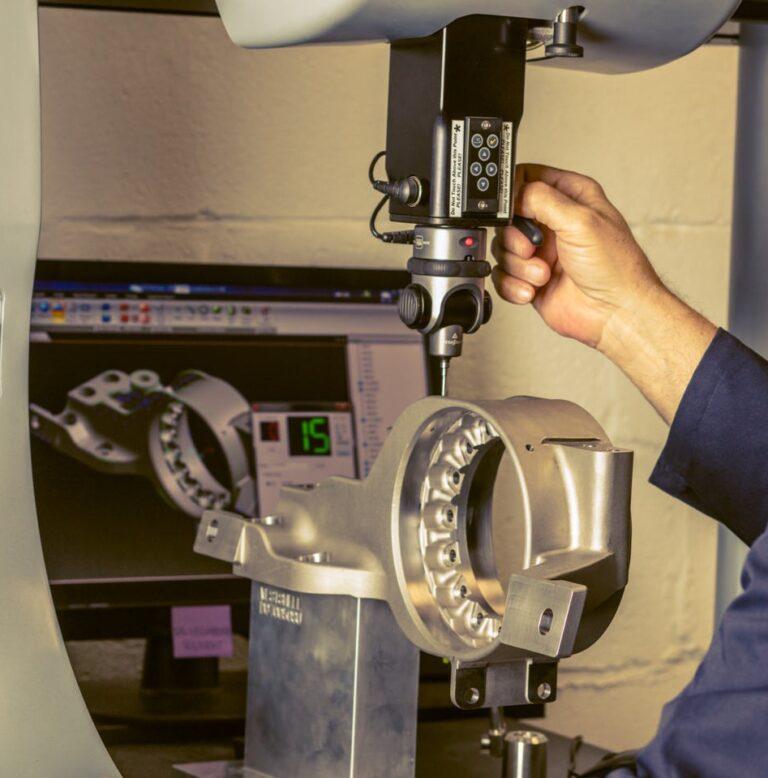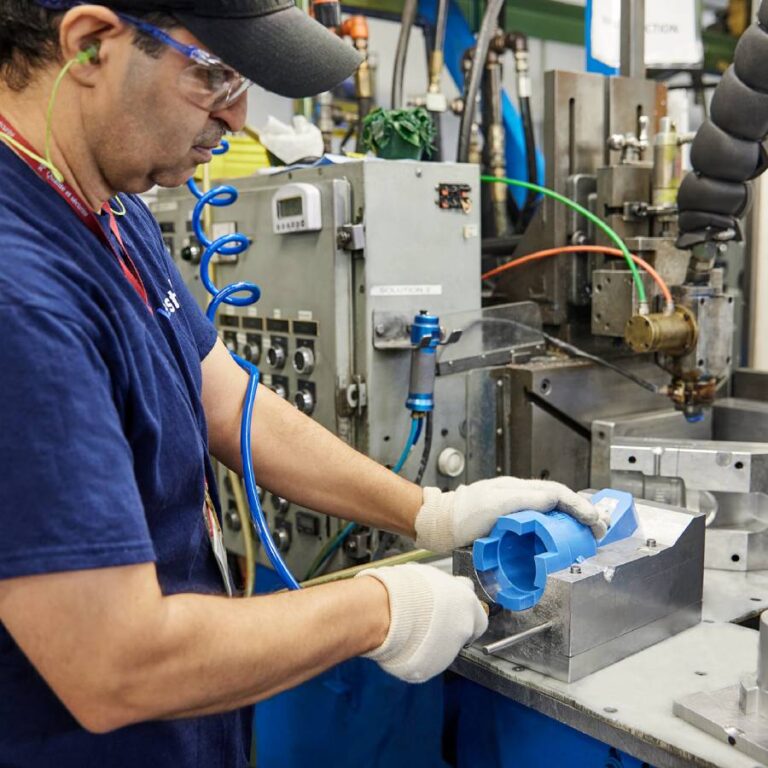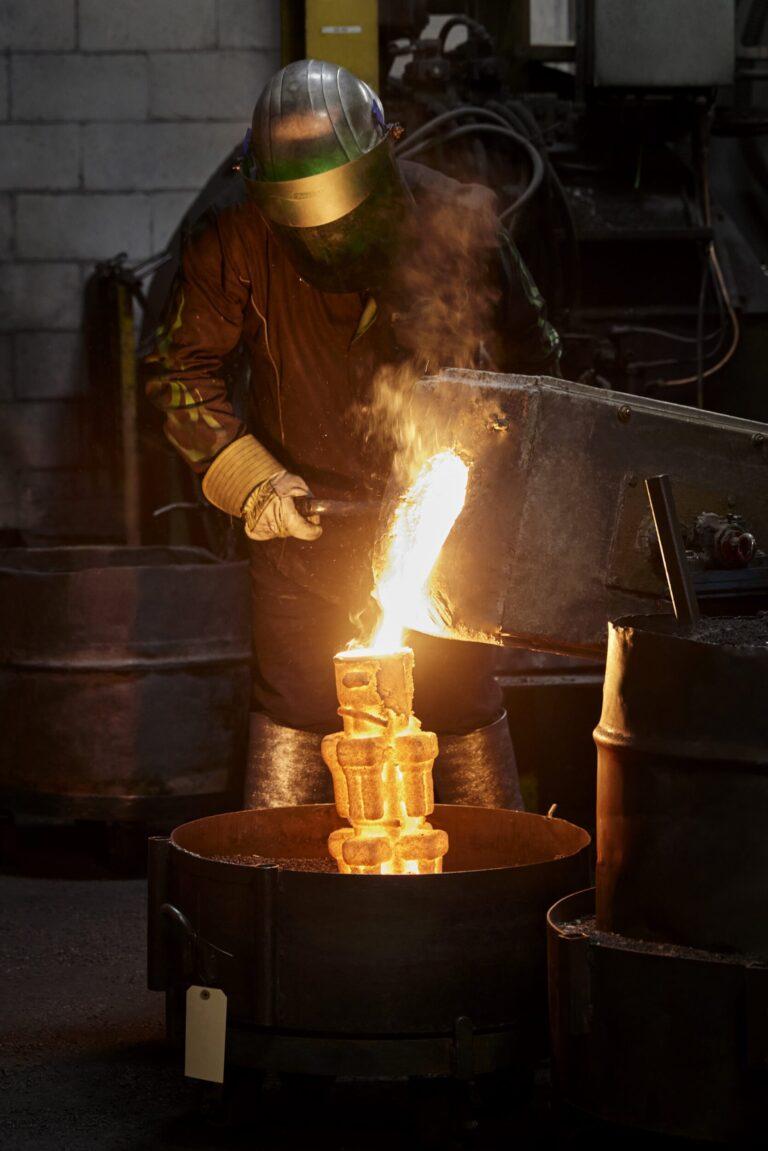In metallurgy, lost wax casting represents an old and innovative manufacturing technique. This method, which relies on a combination of artisanal expertise and cutting-edge technologies, enables the production of exceptional molten steel, meeting various industries’ rigorous standards.
In this guide, we will explore the phases of producing molten steel by investment casting, highlighting its fundamentals, its different techniques and its practical applications in fields as diverse as aeronautics, automobiles and medicine. Prepare to delve into the details of this complex and captivating method, which continues to shape the landscape of modern engineering.
The role of the furnace in molten steel production
In producing molten steel, the furnace plays a central and crucial role. In the furnace, raw materials such as iron ore, coal and limestone are heated to extremely high temperatures to form a liquid mixture called slag. This slag is then mixed with additives to adjust the chemical composition and properties of the resulting steel.
The furnace also acts as a chemical reactor, where reduction and fusion reactions occur to transform iron ore into liquid metal. The temperature and conditions inside the furnace are carefully controlled to ensure complete and even fusion of the metal, as well as the precise chemical composition of the final steel.
Heating techniques and temperature control for quality steel
In steel manufacturing, heating techniques and temperature control are crucial elements in ensuring the quality of the final product. Several methods heat the steel and control its temperature throughout the production process.
One of the most common techniques is induction heating, which uses a magnetic field to generate heat inside the steel. This method allows for rapid and precise heating, ensuring an even temperature throughout the room.
Another standard method is combustion heating, where gas or oil is burned to generate heat. This technique is often used in blast and electric arc furnaces to smelt iron ore and other raw materials. Temperature control in these furnaces is essential to ensure the complete fusion of the metal and the precise chemical composition of the resulting steel.
In addition to heating techniques, temperature control during the cooling process is crucial to obtain high-quality steel. Controlled cooling stabilizes the crystalline structure of the steel and optimizes its mechanical properties. Methods such as air cooling, water cooling and quenching are used to control the cooling rate and achieve the desired properties of the steel.
Steel slag: by-product of molten steel and its utilization
Steel slag, often called “slag,” is an inevitable byproduct of molten steelmaking. They form when iron ore and other raw materials are smelted in a blast or electric arc furnace. Slag consists mainly of iron silicates, oxides, and other impurities separated from the liquid metal during smelting.
Steel slag has many valuable applications in various industrial fields despite its origin as a byproduct. One of the most common uses is in construction and landscaping, where crushed slag is used as a base material for roads, driveways and parking lots. Their rough texture and ability to compact make them an ideal material for stabilizing soil and providing a durable surface.
In addition to its use in construction, steel slag is used in the cement industry as a filler and additive in cement manufacture. They act as an effective binder, helping to strengthen the structure of the cement and improve its mechanical properties.
Furthermore, steel slag can also be used as an abrasive in the sandblasting process for cleaning and preparing metal surfaces before painting or coating. Their hardness and controlled particle size make them popular for removing rust, old coatings and surface contaminants.
Casting processes for molten steel: techniques and technologies
Molten steel casting processes play a crucial role in manufacturing high-quality steel, offering a variety of techniques and technologies to meet the specific needs of different industrial applications. The most commonly used methods include continuous, centrifugal, vacuum, and sand casting.
Continuous casting is one of the most widely used processes for producing steel in large quantities and of consistent quality. In this process, molten steel is poured into a continuous mold that moves through water-cooled rollers. The metal cools and gradually solidifies, forming a constant bar of steel, which is then cut to the desired length.
Centrifuge casting is a technique used to produce hollow parts such as tubes and pipes. In this process, molten steel is poured into a mold and placed in a centrifuge machine. The centrifugal force generated by the rotation of the mold pushes the molten metal against the walls of the mold, creating a hollow part with a uniform wall.
Vacuum casting is a method used to produce high-quality parts with fine details and complex shapes. In this process, molten steel is poured into a mold and placed under a vacuum to remove air bubbles and impurities. This results in parts with uniform density and a smooth surface finish.
Finally, sand casting is a technique used to produce large and complex shaped parts. In this process, a sand mold is made by compacting sand around a shaped part model to be produced. The molten steel is poured into the sand mold, which cools and solidifies to form the final part.
The blast furnace: the heart of steel manufacturing
The blast furnace is at the heart of the steel industry, a massive and complex structure that plays a central role in steel production. This metallurgical behemoth transforms iron ore into raw metal, ready to be refined and transformed into various finished products.
The process begins by continuously feeding raw materials such as iron ore, coal and limestone into the upper part of the blast furnace. Inside, extremely high temperatures, often reaching over 1500°C, are maintained through coal combustion and exothermic chemical reactions. This intense heat melts the iron ore and extracts the liquid metal from the impurities.
The molten iron ore and impurities form a molten mass called slag, separated from the raw metal in the lower part of the blast furnace. The slag is then recovered for use in various applications, while the raw metal is poured into molds to form steel ingots or slabs.
The blast furnace is a centerpiece of the steel industry, capable of operating continuously for years to meet the growing worldwide demand. Its efficiency and reliability are essential to ensure large-scale industrial production while minimizing costs and preserving natural resources.
Applications of molten steel in modern industry
Molten steel, produced from the blast furnace and molten steel casting process, is a versatile material widely used in various modern industrial applications. Its unique strength, durability and malleability make it a material of choice for many products and systems across multiple industries.
In the automotive industry, cast steel is widely used to manufacture chassis, bodies and structural components for its ability to absorb shock and provide crash protection. Its lightweight and corrosion resistance also makes it an ideal material for automotive applications, helping to improve vehicles’ performance and energy efficiency.
In the energy field, molten steel is used to manufacture turbines, generators and other essential equipment for producing electricity from coal, natural gas and power wind turbines. Its ability to withstand high temperatures and corrosive environments makes it an indispensable material for demanding energy applications.
Molten steel is also used in various other industrial applications, such as manufacturing tools, machinery, lifting equipment, reinforcement for reinforced concrete, and much more. Its versatility and reliability make it a material of choice for manufacturers and engineers worldwide, helping to build robust infrastructure and achieve technological advancements in many areas.
Similar articles


